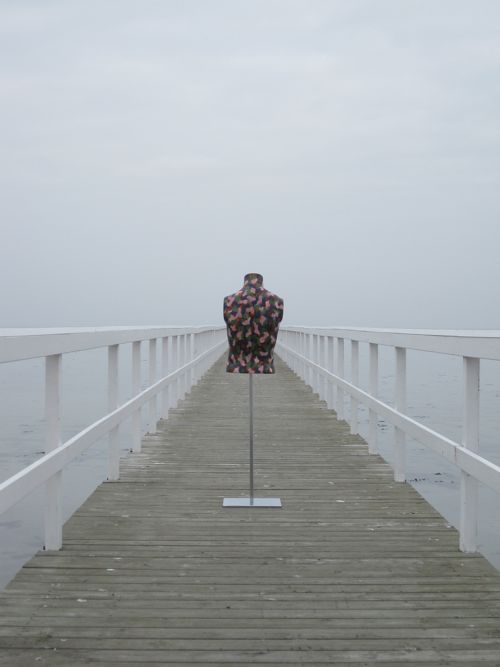
Tag: Johan Berggren Gallery
Zak Kitnick & Fredrik Værslev //
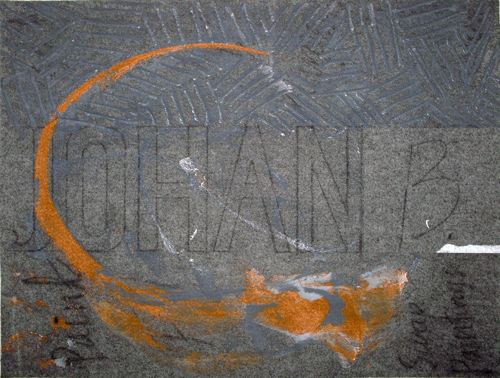
Johan Berggren Gallery is pleased to present the work of two emerging artists, Zak Kitnick (US) and Fredrik Værslev (NO), in an exhibition curated by Geir Haraldseth (NO). The didactic desire to contrast and compare the work of two different artists is hard to avoid, in particular when the two share a wealth of references and interests, while still differing in methods and ideologies. Both artists have used the physical gallery space as more than just a staging area for the works, as Kitnick tackles the walls and the window of the gallery, and Værslev the terrazzo floor and the carpet. This is not just a simple continuation of concerns raised by artists working with institutional critique, examining and mining the mechanisms of the gallery space and the art world, but a fusing of, and simultaneous critique, of architecture, design, art, and decor.
The first room is directly linked to minimalism and the works echo the concerns of scale and the human body, creating sculptural interactions that also reference a history of painting, both of high and vernacular, and architecture. Kitnick has installed four sets of blinds in relation to the window, creating a sculptural grid that filters the light, obscures the space, and intervenes with the architecture, while Værslev’s three large rectangular paintings all stem from an illusionist insistence on turning the canvas and paint into stone, using methods and techniques that range from Jackson Pollock to graffiti.
The second room continues Værslev’s floor fetish and is made in collaboration with Ståle Vold (NO). The carpet as canvas creates a dialog between Vold and Værslev, once teacher and student, revealing a journey through recent art history, while transforming the idea of the auteur artist into the work of a design team. Kitnick’s fascination with design is revealed in his Donald Judd inspired paintings based on a new design for a brownie tin, making sure to maximize crust. The concept of making life easier through design is examined in the paintings and parallels the idea of progress in painting and art.
The two artists are not timid or discreet about their references or their passions, creating room for questions that reveal more than a mere faithful approach to painting, institutional critique, appropriation, minimalism, or any other art historical trope would. Kitnick and Værslev have an irreverent, yet serious approach to art and the way art is projected and thought of in the world at large, and they brings those ideas and concepts back into the gallery.
Per-Oskar Leu
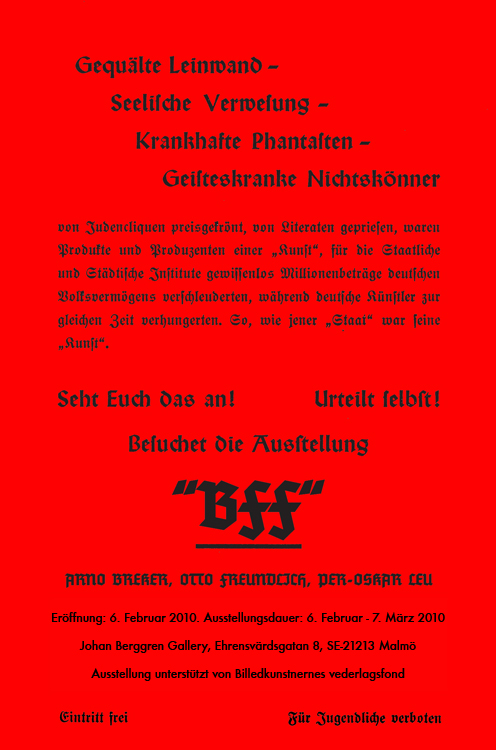
Johan Berggren Gallery is pleased to announce an exhibition by Norwegian artist Per-Oskar Leu (b.1980). The show is a straightforward synthesis of various elements, sentiments and strategies in Leu’s practice throughout the recent years. At the bottom, as always, there’s a rigorous research and archival process that has resulted in an expansion and recontextualisation of historical processes – questioning our conception of a number of actual historical events.
The exhibition BFF – Best Friends Forever – is an attempt to poke at the term ’Political Art’. Arno Breker and Otto Freundlich, two German artists of the early 20th century who stood on opposite sides of the political spectrum – Breker was Hitler’s favourite artist and Freundlich was an outspoken communist – form the basis for this project. They suffered very different fates but their life stories are both quite remarkable, and could be used as examples of ‘political artists’ who quite literally lived and died for their beliefs. Leu’s extensive research, points in the direction that Breker and Freundlich might have met already in Paris during the 1920’s. When looking back, the artists’ lives and struggles come to personify the ongoing cultural turmoil of war-time Europe as well as what happened to the understanding of art at the time. The BFF project, in many ways, reflect how the nazi system’s attack on modernism resulted in the marginalization of the classic-heraldic sculptural language and figurative art as such.
The current exhibition can best be understood as a curated one. It shows the artist intermingling and recreating historical material and artifacts. For the first time ever, original works by Breker and Freundlich will be shown together. A dialogue is created between the two characters using acquired works. But Leu also recreates, intervenes and creates new ones. A central work shows the resurrection of Freundlich’s lost sculpture ‘Der neue Mensch’ – the poster work of the ’Entartete Kunst’ show – and destroyed by the nazis. Using Rapid Prototyping Technology and recycling an original sculptural work by Breker, Leu thus conseals Breker’s and Freundlich’s possible friendship forever. Another work shows a film sequence shot in Paris where Leu has gotten hold of an SS uniform, identical to the one Breker wore in an infamous photo with Hitler in front of the Eiffel Tower. Staging a performance work at the exact same spot, the film plays on the fact that a large portion of both Freundlich’s and Breker’s works have been lost and touch upon the great sensitivity and strategies that we’re using to deal with this, still very loaded period of European history, as well as the changing role of the artist throughout the years 1933-45.
PATRIK AARNIVAARA
PATRIK AARNIVAARA
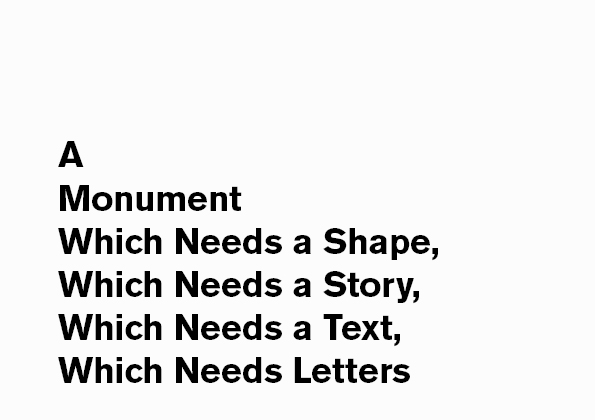
A Monument Which Needs a Shape, Which Needs a Story, Which Needs a Text, Which Needs Letters
Johan Berggren Gallery is very pleased to announce a solo exhibition of Malmö based artist Patrik Aarnivaara (b. 1977). For his exhibition, Aarnivaara continues to investigate the concept of an idealized Monument both from its permanent and historical vs. temporal and contemporary aspects and constituents. Throughout the two gallery spaces and in between a red and a blue light, Aarnivaara arranges a sequence of sculptures, images, texts and collages – elements that could be seen as parts of an inquiry into the textual, material, mythical and temporal aspects of such a Monument.
A meandering thought process starts which leaves traces, which ends up in an ideological form, which progresses, which entrenches, which seeks openings in shapes and stories, which moves into a dead-end. A thought of a Monument which needs to move within what forms and materials that is available or remains still. A thought moving through this and that, now and then, yes and no, blue and red, establishing similarity and community through its need for a shape – which needs a story, which needs a text, which needs letters.
In his earlier sculptural installations Aarnivaara has staged narratives or propositions that reflect on the relationship between political ideas, art, architectural theories and geometrical shapes. The sculptures have consisted of assorted objects, texts, models and images – often displayed on table-like, triangular, supporting structures. New to this exhibition is the abstracted and self-supporting quality of each and every element in the exhibition. Every individual work carves out a well-defined space for itself, while still performing on a communal level, further enhancing the collective environment and adding to the spatial complexity.
JUDGE ME
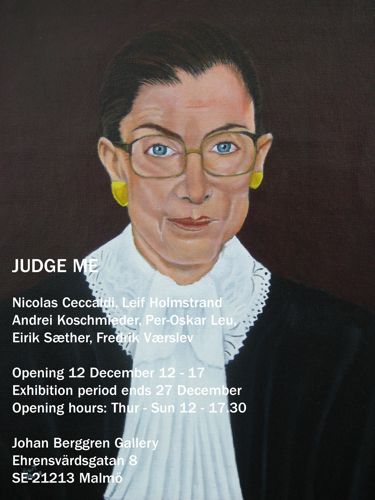
JUDGE ME
Johan Berggren Gallery
Artists featured:Nicolas Ceccaldi, Leif Holmstrand, Andrei Koschmieder, Per-Oskar Leu, Eirik Sæther & Fredrik Værslev
Johan Berggren Gallery is pleased to present a short group show leading up to the Christmas holidays. Against a backdrop of painted portraits of high court justices a theme and arena is set to explore creative decision making and intuition. The imposed, overall condition has been short notice and the aim to still present consistent works and a well conceived show. It’s tapping into the current works of a number of artists whom have either exhibited in the gallery or will exhibit in the near future.